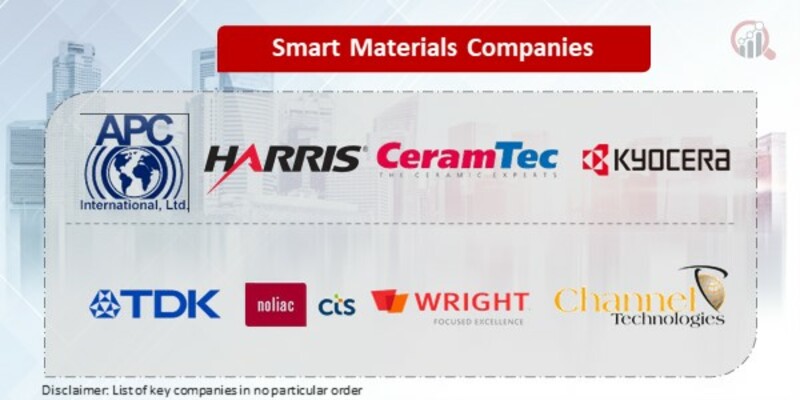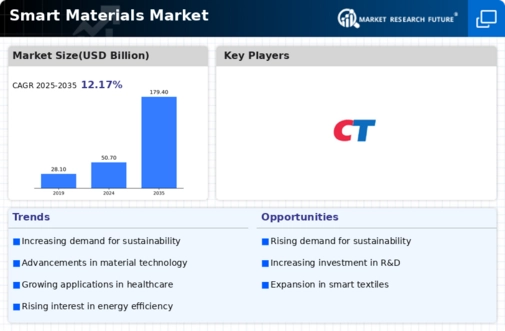Top Industry Leaders in the Smart Materials Market

The world of smart materials pulsates with boundless potential, promising a future where materials morph and adapt to our needs. With a projected market valuation reaching dynamic landscape attracts an orchestra of players vying for control over its resonant chords. But how do they compete, and what are the melodies echoing through the industry right now?
Strategies in Harmony:
-
Technological Symphony: Innovation is the conductor, driving players like Siemens and Intel to invest heavily in R&D. From self-healing polymers to shape-shifting metals, the quest for novel functionalities is constant. -
Diversification Concerto: Companies like Arkema and Saint-Gobain are expanding their repertoire, offering a diverse range of smart materials for various applications. This includes piezoelectric materials for energy harvesting, thermochromic materials for adaptive buildings, and electrochromic materials for smart windows. -
Merger and Acquisition Crescendo: Strategic collaborations and acquisitions, like Schneider Electric acquiring Telvent, are accelerating market consolidation. This fosters knowledge sharing, strengthens supply chains, and expands geographical reach. -
Sustainability Ballad: The green orchestra plays a powerful tune, with players like Covestro and DuPont developing bio-based and recyclable smart materials. Sustainability regulations and consumer demand are fueling this movement. -
Collaboration Chorus: Open innovation is taking center stage, with universities, research institutions, and startups joining forces with established players. This collaborative spirit accelerates breakthroughs and ensures diverse perspectives.
Factors Determining Market Share:
-
Technological Expertise: Players with a proven track record in material science and nanotechnology, like Honeywell and Dow, hold an advantage. Their research prowess translates into cutting-edge solutions and early market entry. -
Manufacturing Prowess: Scaling up production and ensuring consistent quality are crucial. Companies like Johnson Matthey and Asahi Kasei excel in this area, boasting robust manufacturing capabilities and global distribution networks. -
Application Focus: Catering to specific needs is key. For instance, Nitinol Devices & Components dominates the medical device market with its shape-memory alloys, while Gentex Corporation leads in smart window technology for automotive applications. -
Regulatory Compliance: Navigating the complex web of regulations governing smart materials is essential. Expertise in safety standards and certifications, like UL listing, gives players like Saint-Gobain Sage Glass a competitive edge. -
Partnerships and Ecosystem Building: Cultivating strong relationships with other players in the value chain, such as architects, engineers, and system integrators, is crucial for successful implementation of smart materials in real-world applications.
Key Players:
APC International (U.S.)
Harris Corporation (U.S.)
CeramTec (Germany)
Kyocera Corporation (Japan)
TDK Corporation (Japan)
Noliac A/S (Denmark)
Wright Medical Group Inc. (U S.)
Channel Technologies Group (U S.)
LORD Corporation (US.)
Recent Developments :
September 2023: A major construction project in Dubai incorporates self-cleaning and temperature-regulating smart materials into its facade, setting a new precedent for sustainable and dynamic architecture.
October 2023: Researchers successfully integrate biocompatible smart materials into artificial organs, paving the way for personalized medicine and advanced prosthetics.
November 2023: The world's first smart bridge equipped with sensors and self-diagnostic capabilities is unveiled in Japan, marking a significant step towards intelligent infrastructure.
December 2023: A major breakthrough in nanomaterials research leads to the creation of ultra-thin, flexible, and transparent solar cells, promising a bright future for renewable energy technology.









